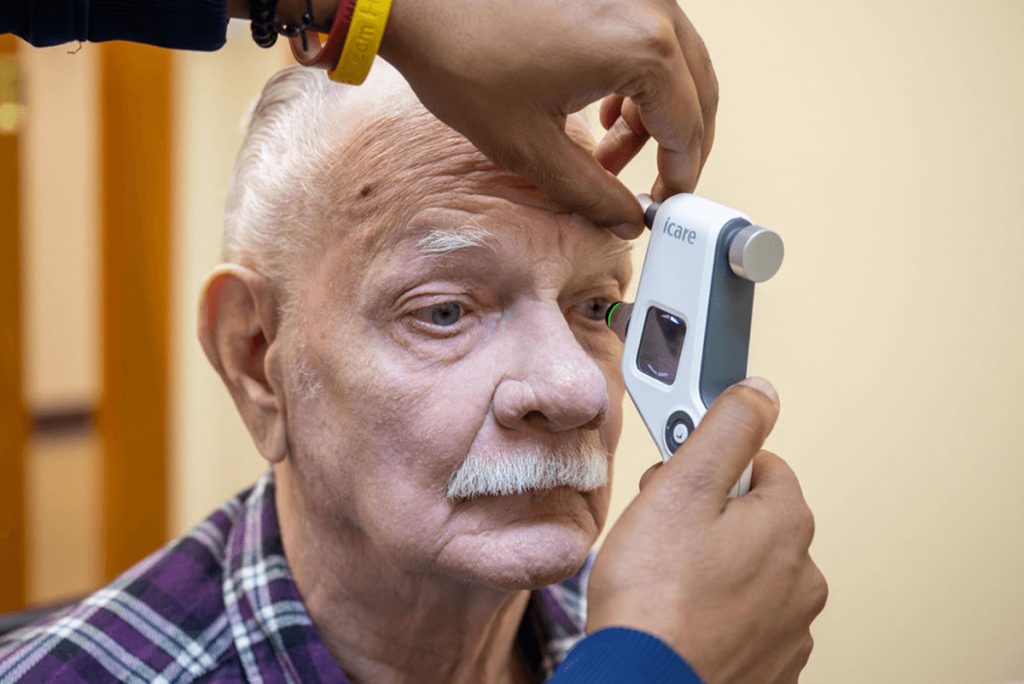Eye Disease Management
Comprehensive Dry Eye Management and Treatment

Understanding Dry Eye Syndrome
Dry eye syndrome is a common condition that occurs when your eyes don’t produce enough tears or when the quality of tears isn’t sufficient to keep your eyes lubricated. This leads to symptoms like dryness, irritation, redness, and a gritty sensation in the eyes. It can even cause blurred vision and light sensitivity if left untreated.
At our offices in Worcester, Randolph, Lincoln, and Cranston, we specialize in diagnosing and managing dry eyes to ensure your comfort and long-term eye health.
Dry eye can be triggered by a variety of factors, including:
- Aging: Tear production naturally decreases with age.
- Environmental factors: Prolonged exposure to wind, smoke, or dry climates can exacerbate symptoms.
- Prolonged screen use: Spending hours on digital devices reduces blinking, leading to tear evaporation.
- Medications: Antihistamines, decongestants, and certain blood pressure medicines may contribute to dry eye.
- Health conditions: Diabetes, arthritis, or thyroid issues can interfere with tear production.
Understanding the underlying cause is key to effective dry eye syndrome management.
Our offices use state-of-the-art technology to pinpoint the cause of your symptoms. These diagnostic tools include:
- Tear film evaluation: Measures tear production and quality.
- Meibomian gland assessment: Examines the glands responsible for producing the oil layer of tears.
- Corneal and conjunctival staining: Highlights areas of dryness or damage on the eye’s surface.
By accurately diagnosing the condition, we can create a personalized treatment plan tailored to your needs.
Our experienced eye care professionals offer a variety of treatments for dry eye pain and discomfort:
- Artificial Tears and Lubricants
Over-the-counter or prescription eye drops can help keep your eyes hydrated throughout the day. - Plugs for Dry Eyes
Tiny, biocompatible plugs are inserted into the tear ducts to help retain moisture on the eye’s surface. These eye plugs for dryness are a safe and effective option for moderate to severe dry eye cases. - Prescription Medications
Anti-inflammatory drops, such as cyclosporine, can reduce inflammation and stimulate natural tear production. - Nutritional Supplements
Omega-3 fatty acids, found in fish oil, can improve the quality of your tears and reduce dryness. - Lifestyle Adjustments
Simple changes, like reducing screen time, using a humidifier, or wearing wraparound sunglasses, can minimize symptoms.
- Expertise: Our optometrists specialize in treating complex cases of dry eye.
- Advanced Care: We stay at the forefront of dry eye technology and treatments.
- Patient-Centered Approach: We take the time to understand your symptoms and create a treatment plan that fits your lifestyle.
Dry eye is often a chronic condition that requires ongoing management. Regular check-ups allow us to monitor your progress and adjust treatments as needed. If symptoms persist or worsen, additional therapies may be recommended.
Dry eyes can affect your daily life, from reading to working on a computer. Relief is possible with the right care. Schedule your eye appointment for contacts or dry eye consultation today and discover the path to comfortable, hydrated eyes.